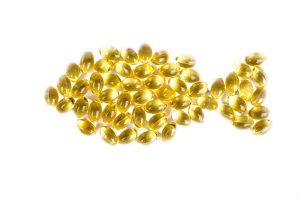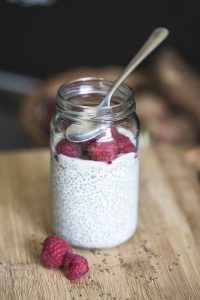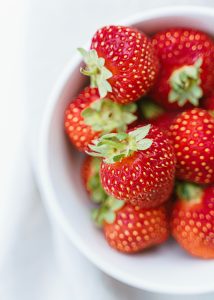How To Get Motivated To Work Out
 If you live in Houston, TX, getting motivated to work out is hard, especially on hot days. When you’re drenched in sweat from walking down the street, working up a sweat in the gym does not sound inviting. If that thought pops up, remember that the gym is air-conditioned. People often find reasons not to exercise after a tough day at work, but it’s the best time to exercise. You’ll burn off all the stress hormones and feel better when you’ve finished. There are other ways to motivate yourself to stick with your goals.
If you live in Houston, TX, getting motivated to work out is hard, especially on hot days. When you’re drenched in sweat from walking down the street, working up a sweat in the gym does not sound inviting. If that thought pops up, remember that the gym is air-conditioned. People often find reasons not to exercise after a tough day at work, but it’s the best time to exercise. You’ll burn off all the stress hormones and feel better when you’ve finished. There are other ways to motivate yourself to stick with your goals.
Focus on the reason you started your fitness program.
Everyone has a reason for setting their goals. It might be as simple as clothing not fitting or looking into a full-length mirror. Identify your reason, then write it down and refer to it frequently. Maybe you want to be fit enough to play with children or grandchildren. It might be a health issue that you can improve with exercise. If you haven’t written down your goal and broken it into smaller, more quickly achieved weekly goals, do so and focus on achieving your goal each week.
Schedule your workout as you would any appointment.
You probably wouldn’t skip an appointment with your doctor or to a function where you were the guest speaker. When you put your workout in your schedule, you’re making it a priority. Working out with a friend you meet in the gym or ride with makes it even more important. It’s one reason working out with a personal trainer is so successful. They hold you accountable for your appointment with the gym.
Keep score.
Track your progress. When you track your progress, you turn your workout into a game. Track the number of reps and sets of each exercise and focus on beating your last workout. If your goal is weight loss, track your weight and your measurements at the same time each week. Don’t weigh yourself every day. Weight fluctuates daily and can be depressing or misleading. If you lose inches but not weight, it’s still a win. Muscle tissue weighs more than fat tissue, so you’re building muscle that can make weight loss easier.
- Keep a photo log of your appearance. Take a picture once a week or month in the same outfit and spot. When you don’t feel like exercising, you can look back and be motivated by your progress.
- Do the one-step-at-a-time method. When you don’t feel like working out, tell yourself you’ll go to the gym, but give permission to leave if you want. Once you get there, do one set, still allowing yourself to leave. Before you know it, you’ll finish your workout.
- Focus on what you like about working out. Maybe it’s as simple as feeling in control and proud when finishing. It might be the exhilaration you feel when pushing yourself to the max.
- Make a deal with a friend who is also exercising. You give them money when you don’t exercise, and they give it to you when they don’t. See who makes the most money at the end of three months.
For more information, contact us today at Rising Fitness Gym



 If you’re planning a vacation, include plans that help you reach your goals. It’s not easy to stay fit while you travel, but you can do it with some forethought. Choosing your destination and the type of vacation you’ll have is one step. Make it active. You can start preparations now so the family is fit. Is a theme park with the kids your destination? Tell the kids everyone needs to build their energy level for a day or days at the park.
If you’re planning a vacation, include plans that help you reach your goals. It’s not easy to stay fit while you travel, but you can do it with some forethought. Choosing your destination and the type of vacation you’ll have is one step. Make it active. You can start preparations now so the family is fit. Is a theme park with the kids your destination? Tell the kids everyone needs to build their energy level for a day or days at the park.
 You learn from your mistakes, but nobody wants to make them when they first start at a new gym. It’s hard enough feeling self-conscious being the new person and pretty intimidating. Most people are focused on their workout and don’t notice, but not all errors are inconsequential. Some mistakes can affect how quickly you reach your goal or if you increase the potential for injury. Here are common mistakes and ways to correct them.
You learn from your mistakes, but nobody wants to make them when they first start at a new gym. It’s hard enough feeling self-conscious being the new person and pretty intimidating. Most people are focused on their workout and don’t notice, but not all errors are inconsequential. Some mistakes can affect how quickly you reach your goal or if you increase the potential for injury. Here are common mistakes and ways to correct them.
 Whether you’re trying to lose weight or are searching for other health benefits, fasting may be right for you. There are various types of fasting. Your goal, physical health, and preference will determine the one you use. You can do water fasts, 5:2 fasts, intermittent fasts, and many other variations. A 5:2 fast is where you eat normally for five days and abstain from food or eat a severely calorie-restricted diet for two days. You can do intermittent fasting in several ways, too. One of the most popular methods is to eat during an eight-hour window and fast the other sixteen hours.
Whether you’re trying to lose weight or are searching for other health benefits, fasting may be right for you. There are various types of fasting. Your goal, physical health, and preference will determine the one you use. You can do water fasts, 5:2 fasts, intermittent fasts, and many other variations. A 5:2 fast is where you eat normally for five days and abstain from food or eat a severely calorie-restricted diet for two days. You can do intermittent fasting in several ways, too. One of the most popular methods is to eat during an eight-hour window and fast the other sixteen hours.
 People in Houston, TX often put exercise on their schedule to ensure they do it daily. Not only is it easier when it’s considered an appointment but doing it at the same time daily also makes it a habit. It helps ensure the potential for success and consistency. You won’t lose weight if you only eat donuts and one salad occasionally. The same is true for getting fit. You have to be consistent to see the changes you desire. It often takes weeks to see changes, but you’ll feel the difference quicker than that.
People in Houston, TX often put exercise on their schedule to ensure they do it daily. Not only is it easier when it’s considered an appointment but doing it at the same time daily also makes it a habit. It helps ensure the potential for success and consistency. You won’t lose weight if you only eat donuts and one salad occasionally. The same is true for getting fit. You have to be consistent to see the changes you desire. It often takes weeks to see changes, but you’ll feel the difference quicker than that.
 If you’re one of the millions of people who take fish oil, you probably take it for a specific ailment. Fish oil contains omega-3 fatty acids that can improve heart and brain health. The body requires omega-3 to function properly, but it cannot produce it, so it must come from food. It can aid in treating conditions such as depression, asthma, some autoimmune diseases, ADHA, and rheumatoid arthritis. A study at one of the most dangerous prisons in the UK found that increasing omega-3 and providing a nutrient-dense diet significantly reduced violent acts.
If you’re one of the millions of people who take fish oil, you probably take it for a specific ailment. Fish oil contains omega-3 fatty acids that can improve heart and brain health. The body requires omega-3 to function properly, but it cannot produce it, so it must come from food. It can aid in treating conditions such as depression, asthma, some autoimmune diseases, ADHA, and rheumatoid arthritis. A study at one of the most dangerous prisons in the UK found that increasing omega-3 and providing a nutrient-dense diet significantly reduced violent acts.
 There are a lot of food fads that circulate in Houston, TX, and not all of them are healthy. Luckily, the latest fad of using chia seeds in recipes is different. These tiny seeds are power-packed and ready to provide not only health benefits but also some benefits for your recipes. Using chia seeds in food isn’t new. It was a mainstay of the Mayan and Aztec diet. These tiny seeds may not look impressive but when you include them regularly in your diet, you’ll get impressive results.
There are a lot of food fads that circulate in Houston, TX, and not all of them are healthy. Luckily, the latest fad of using chia seeds in recipes is different. These tiny seeds are power-packed and ready to provide not only health benefits but also some benefits for your recipes. Using chia seeds in food isn’t new. It was a mainstay of the Mayan and Aztec diet. These tiny seeds may not look impressive but when you include them regularly in your diet, you’ll get impressive results.
 Occasionally eating a small slice of cake or pie won’t affect your weight loss program much. However, if you eat an entire pie or cake and do it every day, you won’t lose weight. Portion control plays a vital role in weight loss. Portion control is more important for some foods than it is for others. For instance, you can eat as many leafy green vegetables as you want without worry but need to watch portions when consuming higher-calorie foods, even if they are fruit or vegetables. Avocados are one example and nuts are another where portion control makes a difference.
Occasionally eating a small slice of cake or pie won’t affect your weight loss program much. However, if you eat an entire pie or cake and do it every day, you won’t lose weight. Portion control plays a vital role in weight loss. Portion control is more important for some foods than it is for others. For instance, you can eat as many leafy green vegetables as you want without worry but need to watch portions when consuming higher-calorie foods, even if they are fruit or vegetables. Avocados are one example and nuts are another where portion control makes a difference.
 Many recent studies show that gut health makes weight loss easier. The microbiome in the gut impacts your gut health directly. There are millions of them and a variety of species. They include bacteria, viruses, fungi, and other microscopic organisms. They dramatically affect all functions in the body, including gut health. While there are debates on the number of microbes in the body, Scientists agree there are more microbes than cells in our body.
Many recent studies show that gut health makes weight loss easier. The microbiome in the gut impacts your gut health directly. There are millions of them and a variety of species. They include bacteria, viruses, fungi, and other microscopic organisms. They dramatically affect all functions in the body, including gut health. While there are debates on the number of microbes in the body, Scientists agree there are more microbes than cells in our body.
 Do you have dreams of eating cakes and pastries and never gaining weight? The truth is, you can’t. However, there is food you can have in an unlimited amount. Some foods are lower in calories, while others have a thermogenic effect. When your body digests food, it takes extra energy. Some types of food require more energy to digest than others. Food like celery is already low in calories and when you factor in the thermogenic effect, it is even lower and may be negative calories.
Do you have dreams of eating cakes and pastries and never gaining weight? The truth is, you can’t. However, there is food you can have in an unlimited amount. Some foods are lower in calories, while others have a thermogenic effect. When your body digests food, it takes extra energy. Some types of food require more energy to digest than others. Food like celery is already low in calories and when you factor in the thermogenic effect, it is even lower and may be negative calories.